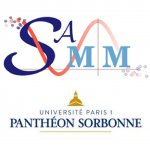Sparse Coding
Résumé : There are various hints that sparse coding is one of the fundamental
structural principles of the brain. We are interested in applying this
principle to technical cognitive tasks. One of these tasks is pattern
recognition, where one needs features which clearly describe the
patterns involved. As soon as such features are identified, also the
following classification task becomes feasible. Unfortunately, there
is no theoretically founded method yet for extracting features with
which a pattern recognition problem can be solved optimally. The
visual cortex employs sparse coding for representing natural images.
In experiments on digit recognition and face finding we demonstrate
that sparse coding provides very promising results in these technical
task. We show that the principle of sparse coding can also be applied
to 3D-images of time-of-flight cameras and, perhaps as an ideal
scenario, to manipulating space-time video patches for attention
control.
Cet exposé se tiendra en salle C20-13, 20ème étage, Université
Paris 1, Centre Pierre Mendès-France, 90 rue de Tolbiac, 75013 Paris
(métro : Olympiades).
